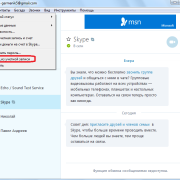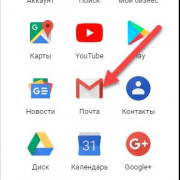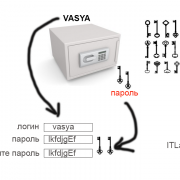Класс tzinfo() модуля datetime в python
Содержание:
- Converting a Python Time String to an Object
- Python Current Date and Time: now() today()
- datetime.datetime
- Timezone Constants¶
- Timezone Constants¶
- Работа с unix timestamp/time на python
- Timezone Constants¶
- Приемы использования модуля datetime.
- Получаем текущее время и дату.
- Преобразуем объект в секунды ():
- Преобразуем время в секундах () в объект :
- Получить объект из отдельных объектов и :
- Форматирование вывода строки c датой и временем:
- Преобразование строки с датой и временем в объект :
- Сложение и вычитание даты и времени:
- Сравнение объектов :
- Measuring Performance
- Модуль datetime
- Converting a Local Time Object to Seconds
- Операции с датами
Converting a Python Time String to an Object
When you’re working with date and time related strings, it can be very valuable to convert the timestamp to a time object.
To convert a time string to a , you use , which stands for “string parse time”:
>>>
The first argument to must be the timestamp you wish to convert. The second argument is the that the timestamp is in.
The parameter is optional and defaults to . Therefore, if you have a timestamp in that format, you don’t need to pass it as an argument:
>>>
Since a has 9 key date and time components, must provide reasonable defaults for values for those components it can’t parse from .
In the previous examples, . This means that can’t determine by the timestamp whether it represents daylight savings time or not.
Python Current Date and Time: now() today()
Step 1) Like Date Objects, we can also use «DATETIME OBJECTS» in Python. It gives date along with time in hours, minutes, seconds and milliseconds.
When we execute the code for datetime, it gives the output with current date and time.
Step 2) With «DATETIME OBJECT», you can also call time class.
Suppose we want to print just the current time without the date.
t = datetime.time(datetime.now())
- We had imported the time class. We will be assigning it the current value of time using datetime.now()
- We are assigning the value of the current time to the variable t.
And this will give me just the time. So let’s run this program.
Okay, so you can see that here I got the date and time. And then the next line, I’ve got just the time by itself
Step 3) We will apply our weekday indexer to our weekday’s arrayList to know which day is today
- Weekdays operator (wd) is assigned the number from (0-6) number depending on what the current weekday is. Here we declared the array of the list for days (Mon, Tue, Wed…Sun).
- Use that index value to know which day it is. In our case, it is #2, and it represents Wednesday, so in the output it will print out «Which is a Wednesday.»
Here is the complete code to get current date and time using datetime now
Here is the complete code to get current date and time using datetime now
from datetime import date
from datetime import time
from datetime import datetime
def main():
##DATETIME OBJECTS
#Get today's date from datetime class
today=datetime.now()
#print (today)
# Get the current time
#t = datetime.time(datetime.now())
#print "The current time is", t
#weekday returns 0 (monday) through 6 (sunday)
wd=date.weekday(today)
#Days start at 0 for monday
days=
print("Today is day number %d" % wd)
print("which is a " + days)
if __name__== "__main__":
main()
datetime.datetime
Объект datetime.datetime содержит всю информацию объектов datetime.date плюс datetime.time. Давайте приведем несколько примеров, для лучшего понимания разницы между этим объектом, и объектом datetime.date.
Python
import datetime
a = datetime.datetime(2017, 3, 5)
print(a) # datetime.datetime(2017, 3, 5, 0, 0)
b = datetime.datetime(2017, 3, 5, 12, 30, 10)
print(b) # datetime.datetime(2017, 3, 5, 12, 30, 10)
d = datetime.datetime(2017, 3, 5, 12, 30, 10)
print(d.year) # 2017
print(d.second) # 10
print(d.hour) # 12
|
1 |
importdatetime a=datetime.datetime(2017,3,5) print(a)# datetime.datetime(2017, 3, 5, 0, 0) b=datetime.datetime(2017,3,5,12,30,10) print(b)# datetime.datetime(2017, 3, 5, 12, 30, 10) d=datetime.datetime(2017,3,5,12,30,10) print(d.year)# 2017 print(d.second)# 10 print(d.hour)# 12 |
Мы видим, что datetime.datetime принимает несколько дополнительных аргументов: год, месяц, день, час, минута и секунда. Это также позволяет вам указывать информацию о микросекундах и часовом поясе. При работе с базами данных, данные типы объектов будут использоваться достаточно часто. Большую часть вашей работы, вам нужно будет конвертировать форматы date или datetime Python в форматы SQL datetime или timestamp
Обратите внимание на то, что today совместно с datetime.datetime использует два разных метода:
Python
import datetime
a = datetime.datetime.today()
print(a) # datetime.datetime(2017, 4, 5, 0, 16, 54, 989663)
b = datetime.datetime.now()
print(b) # datetime.datetime(2017, 4, 5, 0, 17, 8, 24239)
|
1 |
importdatetime a=datetime.datetime.today() print(a)# datetime.datetime(2017, 4, 5, 0, 16, 54, 989663) b=datetime.datetime.now() print(b)# datetime.datetime(2017, 4, 5, 0, 17, 8, 24239) |
Модуль datetime содержит другой метод, под названием strftime. Этот метод позволяет разработчику создавать строку, отображающую время в более понятной для человека форме. Существует целая таблица параметров форматирования, с которой рекомендуется ознакомиться в документации Python, в . Давайте взглянем на несколько примеров, показывающих всю полезность данного метода:
Python
import datetime
a = datetime.datetime.today().strftime(«%Y%m%d»)
print(a) # ‘20170405’
today = datetime.datetime.today()
print( today.strftime(«%m/%d/%Y») ) # ’04/05/2017′
print( today.strftime(«%Y-%m-%d-%H.%M.%S») ) # 2017-04-05-00.18.00
|
1 |
importdatetime a=datetime.datetime.today().strftime(«%Y%m%d») print(a)# ‘20170405’ today=datetime.datetime.today() print(today.strftime(«%m/%d/%Y»))# ’04/05/2017′ print(today.strftime(«%Y-%m-%d-%H.%M.%S»))# 2017-04-05-00.18.00 |
Первый пример – это скорее хитрость. В нем показано, как конвертировать сегодняшний объект datetime в строку, следующую за форматом YYYYMMDD (ГГГГММДД). Второй пример более наглядный.
В нем мы присваиваем объект datetime переменной под названием today и применяем два разных параметра форматирования строки. Первый параметр добавляет косые черточки между элементами datetime, а также перегруппировывает datetime, теперь он делится на месяц, день и год. В последнем примере мы создаем временную отметку, которая следует типичному формату: YYYY-MM-DD.HH.MM.SS. Если вам нужно указать год как двухзначный (“YY”), вы можете заменить %Y на %y.
Timezone Constants¶
-
The offset of the local DST timezone, in seconds west of UTC, if one is defined.
This is negative if the local DST timezone is east of UTC (as in Western Europe,
including the UK). Only use this if is nonzero. See note below.
-
Nonzero if a DST timezone is defined. See note below.
-
The offset of the local (non-DST) timezone, in seconds west of UTC (negative in
most of Western Europe, positive in the US, zero in the UK). See note below.
-
A tuple of two strings: the first is the name of the local non-DST timezone, the
second is the name of the local DST timezone. If no DST timezone is defined,
the second string should not be used. See note below.
Note
For the above Timezone constants (, , ,
and ), the value is determined by the timezone rules in effect
at module load time or the last time is called and may be incorrect
for times in the past. It is recommended to use the and
results from to obtain timezone information.
See also
- Module
-
More object-oriented interface to dates and times.
- Module
-
Internationalization services. The locale setting affects the interpretation
of many format specifiers in and . - Module
-
General calendar-related functions. is the
inverse of from this module.
Footnotes
-
The use of is now deprecated, but the escape that expands to the
preferred hour/minute offset is not supported by all ANSI C libraries. Also, a
strict reading of the original 1982 RFC 822 standard calls for a two-digit
year (%y rather than %Y), but practice moved to 4-digit years long before the
year 2000. After that, RFC 822 became obsolete and the 4-digit year has
been first recommended by RFC 1123 and then mandated by RFC 2822.
Timezone Constants¶
-
The offset of the local DST timezone, in seconds west of UTC, if one is defined.
This is negative if the local DST timezone is east of UTC (as in Western Europe,
including the UK). Only use this if is nonzero. See note below.
-
Nonzero if a DST timezone is defined. See note below.
-
The offset of the local (non-DST) timezone, in seconds west of UTC (negative in
most of Western Europe, positive in the US, zero in the UK). See note below.
-
A tuple of two strings: the first is the name of the local non-DST timezone, the
second is the name of the local DST timezone. If no DST timezone is defined,
the second string should not be used. See note below.
Note
For the above Timezone constants (, , ,
and ), the value is determined by the timezone rules in effect
at module load time or the last time is called and may be incorrect
for times in the past. It is recommended to use the and
results from to obtain timezone information.
See also
- Module
-
More object-oriented interface to dates and times.
- Module
-
Internationalization services. The locale setting affects the interpretation
of many format specifiers in and . - Module
-
General calendar-related functions. is the
inverse of from this module.
Footnotes
-
The use of is now deprecated, but the escape that expands to the
preferred hour/minute offset is not supported by all ANSI C libraries. Also, a
strict reading of the original 1982 RFC 822 standard calls for a two-digit
year (%y rather than %Y), but practice moved to 4-digit years long before the
year 2000. After that, RFC 822 became obsolete and the 4-digit year has
been first recommended by RFC 1123 and then mandated by RFC 2822.
Работа с unix timestamp/time на python
Совсем недавно, я начал свое изучение python. Мне потребовалось несколько дней для того чтобы начать писать на нем элементарные вещи. И мне бы хотелось сохранять полезную информацию в виде своих заметок и для питон.
Как преобразовать unix timestamp в datetime на Python?
Делается это очень просто:
#!/bin/env python3
import datetime
timestamp = 1339521878.04
value = datetime.datetime.fromtimestamp(timestamp)
print(value.strftime('%Y-%m-%d %H:%M:%S'))
Чтобы получить datetime времени (сейчас), можно выполнить:
#!/bin/env python3
import datetime,time
dt = datetime.datetime.now()
value = datetime.datetime.fromtimestamp(time.mktime(dt.timetuple()))
print(value.strftime('%Y-%m-%d %H:%M:%S'))
Вывод будет следующим:
2017-08-04 14:25:21
Как преобразовать datetime в timestamp на Python?
Делается это очень просто:
#!/bin/env python3 from datetime import datetime import time # time tuple in local time to timestamp time_tuple = (2017, 11, 12, 13, 59, 27, 2, 317, 0) timestamp = time.mktime(time_tuple) print (repr(timestamp)) # time tuple in utc time to timestamp time_tuple_utc = (2017, 11, 12, 13, 59, 27, 2, 317, 0) timestamp_utc = calendar.timegm(time_tuple_utc) print (repr(timestamp_utc))
Конвертация в строку:
#!/bin/env python3
from datetime import datetime
import time
# datetime object to string
dt_obj = datetime(2017, 11, 10, 17, 53, 59)
date_str = dt_obj.strftime("%Y-%m-%d %H:%M:%S")
print (date_str)
# time tuple to string
time_tuple = (2017, 11, 12, 13, 51, 18, 2, 317, 0)
date_str = time.strftime("%Y-%m-%d %H:%M:%S", time_tuple)
print (date_str)
Конвертация в datetime:
#!/bin/env python3 from datetime import datetime import time # time tuple to datetime object time_tuple = (2017, 11, 12, 13, 51, 18, 2, 317, 0) dt_obj = datetime(*time_tuple) print (repr(dt_obj)) # date string to datetime object date_str = "2017-11-10 17:53:59" dt_obj = datetime.strptime(date_str, "%Y-%m-%d %H:%M:%S") print (repr(dt_obj)) # timestamp to datetime object in local time timestamp = 1226527167.595983 dt_obj = datetime.fromtimestamp(timestamp) print (repr(dt_obj)) # timestamp to datetime object in UTC timestamp = 1226527167.595983 dt_obj = datetime.utcfromtimestamp(timestamp) print (repr(dt_obj))
Получаем вывод:
datetime.datetime(2017, 11, 12, 13, 51, 18) datetime.datetime(2017, 11, 10, 17, 53, 59) datetime.datetime(2008, 11, 12, 23, 59, 27, 595983) datetime.datetime(2008, 11, 12, 21, 59, 27, 595983)
Конвертация time tuples:
#!/bin/env python3 from datetime import datetime import time # datetime object to time tuple dt_obj = datetime(2017, 11, 10, 17, 53, 59) time_tuple = dt_obj.timetuple() print (repr(time_tuple)) # string to time tuple date_str = "2017-11-10 17:53:59" time_tuple = time.strptime(date_str, "%Y-%m-%d %H:%M:%S") print (repr(time_tuple)) # timestamp to time tuple in UTC timestamp = 1226527167.595983 time_tuple = time.gmtime(timestamp) print (repr(time_tuple)) # timestamp to time tuple in local time timestamp = 1226527167.595983 time_tuple = time.localtime(timestamp) print (repr(time_tuple))
Получим вывод:
time.struct_time(tm_year=2017, tm_mon=11, tm_mday=10, tm_hour=17, tm_min=53, tm_sec=59, tm_wday=4, tm_yday=314, tm_isdst=- 1) time.struct_time(tm_year=2017, tm_mon=11, tm_mday=10, tm_hour=17, tm_min=53, tm_sec=59, tm_wday=4, tm_yday=314, tm_isdst=- 1) time.struct_time(tm_year=2008, tm_mon=11, tm_mday=12, tm_hour=21, tm_min=59, tm_sec=27, tm_wday=2, tm_yday=317, tm_isdst=0 ) time.struct_time(tm_year=2008, tm_mon=11, tm_mday=12, tm_hour=23, tm_min=59, tm_sec=27, tm_wday=2, tm_yday=317, tm_isdst=0 )
Вот и все.
Timezone Constants¶
-
The offset of the local DST timezone, in seconds west of UTC, if one is defined.
This is negative if the local DST timezone is east of UTC (as in Western Europe,
including the UK). Only use this if is nonzero. See note below.
-
Nonzero if a DST timezone is defined. See note below.
-
The offset of the local (non-DST) timezone, in seconds west of UTC (negative in
most of Western Europe, positive in the US, zero in the UK). See note below.
-
A tuple of two strings: the first is the name of the local non-DST timezone, the
second is the name of the local DST timezone. If no DST timezone is defined,
the second string should not be used. See note below.
Note
For the above Timezone constants (, , ,
and ), the value is determined by the timezone rules in effect
at module load time or the last time is called and may be incorrect
for times in the past. It is recommended to use the and
results from to obtain timezone information.
See also
- Module
-
More object-oriented interface to dates and times.
- Module
-
Internationalization services. The locale setting affects the interpretation
of many format specifiers in and . - Module
-
General calendar-related functions. is the
inverse of from this module.
Footnotes
-
The use of is now deprecated, but the escape that expands to the
preferred hour/minute offset is not supported by all ANSI C libraries. Also, a
strict reading of the original 1982 RFC 822 standard calls for a two-digit
year (%y rather than %Y), but practice moved to 4-digit years long before the
year 2000. After that, RFC 822 became obsolete and the 4-digit year has
been first recommended by RFC 1123 and then mandated by RFC 2822.
Приемы использования модуля datetime.
В этом разделе представлены частые приемы работы с объектом даты и времени .
- ,
- ,
- ,
- .
- ,
- ,
- .
- ,
Получаем текущее время и дату.
>>> import datetime >>> dt = datetime.datetime.today() >>> dt # datetime.datetime(2020, 5, 5, 14, 56, 40, 902733) # получаем отдельные компоненты # даты >>> print(dt.year, dt.month, dt.day) # 2020 5 5 # времени >>> print(dt.hour, dt.minute, dt.second) # 14 56 40 # Получаем объект даты >>> dt.date() # atetime.date(2020, 5, 5) # Получаем объект времени >>> dt.time() # datetime.time(14, 56, 40, 902733)
Преобразуем объект в секунды ():
Задача: имеем объект , необходимо его преобразовать в секунды ().
>>> import datetime # Для преобразования получим объект `datetime`, # содержащий дату и время в настоящий момент >>> dt = datetime.datetime.now() >>> dt # datetime.datetime(2020, 5, 6, 13, 52, 5, 208688) # теперь получаем из `datetime` секунды - `timestamp` >>> second = dt.timestamp() >>> second # 1588762325.208688 # можно быстрее, одной строкой >>> second = datetime.datetime.now().timestamp() # 1588762325.208688 # если не нужны доли секунд, то # преобразуем в тип int >>> int(second) # 1588762325
Преобразуем время в секундах () в объект :
Задача: имеем время в секундах, необходимо из секунд получить объект , что бы потом что-то сделать.
>>> import datetime
# имеем время в секундах
second = 1588762325
# преобразовываем секунды в объект 'datetime'
# его же методом '.timestamp()'
>>> dt = datetime.datetime.fromtimestamp(second)
>>> dt
# datetime.datetime(2020, 5, 6, 13, 52, 5)
# дальше работаем как с объектом
# получаем строку
>>> dt.strfptint('%d.%m.%Y %H:%M')
# '06.05.2020 13:52'
# через сколько новый год
>>> future_dt = datetime.datetime.strptime('01.01.2021', '%d.%m.%Y')
>>> delta = future_dt - dt
# через дней
>>> delta.days
# 239
# секунд
>>> delta.seconds
# 36475
# месяцев
>>> 239 // 30
# 7
Получить объект из отдельных объектов и :
>>> import datetime # дата >>> date = datetime.date.today() # время >>> time = datetime.time(23, 55) # интервал >>> delta = datetime.timedelta(minutes=30) # соединяем все вместе >>> datetime.datetime.combine(date, time) + delta # datetime.datetime(2020, 5, 6, 0, 25)
Форматирование вывода строки c датой и временем:
Полный список директив форматирования смотрите в разделе «Коды форматирования и модуля «.
>>> import datetime
>>> dt = datetime.datetime.now()
>>> dt.strftime('%H:%M - %m.%d.%Y года')
# '09:56 - 05.06.2020 года'
>>> dt.strftime('%H часов %M минут %m.%d.%Y года')
# '09 часов 56 минут 05.06.2020 года'
>>> dt.strftime('%m/%d/%y')
# '05/06/20'
>>> dt.strftime('%Y-%m-%d')
# '2020-05-06'
# форматирование даты при помощи функции format()
>>> 'The {1} is {0:%d}, the {2} is {0:%B}, the {3} is {0:%I:%M%p}.' \
.format(dt, "day", "month", "time")
'The day is 06, the month is May, the time is 01:52PM.'
Преобразование строки с датой и временем в объект :
Полный список директив форматирования смотрите в разделе «Коды форматирования и модуля «.
>>> import datetime >>> date_str = 'Fri, 24 Apr 2021 16:22:54 +0000' >>> format = '%a, %d %b %Y %H:%M:%S +0000' >>> datetime.datetime.strptime(date_str, format) # datetime.datetime(2021, 4, 24, 16, 22, 54) >>> date_str = '24.12.2020 16:22' >>> format = '%d.%m.%Y %H:%M' >>> datetime.datetime.strptime(date_str, format) # datetime.datetime(2020, 12, 24, 16, 22)
Сложение и вычитание даты и времени:
При вычитании дат получается объект продолжительности —
Подсчет дней до события.
>>> import datetime >>> today = datetime.datetime.now() >>> date = datetime.datetime(2020, 12, 6) >>> delta = date - today >>> delta.days # 213
Подсчет дней прошедших с события.
>>> import datetime >>> date = datetime.datetime(2019, 12, 31) >>> today = datetime.datetime.now() >>> delta = today - date >>> delta.days # 127
Узнать дату и время предстоящего или прошедшего события.
>>> import datetime >>> today = datetime.datetime.now() # узнаем, какая дата будет через 3 недели и 5 дней >>> delta = datetime.timedelta(weeks=3, days=5) >>> date = today + delta >>> date.day, date.month, date.year # (1, 6, 2020) # узнаем, какая дата была 100 дней назад >>> delta = datetime.timedelta(days=100) >>> date = today - delta >>> date.day, date.month, date.year # (27, 1, 2020) # узнаем, сколько время будет через 1 час 30 минут и 45 секунд >>> delta = datetime.timedelta(hours=1, minutes=30, seconds=45) >>> date = today + delta >>> date.hour, date.minute, date.second # (16, 18, 15)
Сравнение объектов :
- datetime1 считается меньше datetime2, когда datetime1 предшествует datetime2 во времени
- При сравнении c параметром не равным с , у которого параметром вызывается .
- При сравнений на равенство c параметром не равным никогда не будут равен , у которого параметром .
Measuring Performance
You can use to measure the performance of your program.
The way you do this is to use which, as the name suggests, provides a performance counter with a high resolution to measure short distances of time.
To use , you place a counter before your code begins execution as well as after your code’s execution completes:
>>>
First, captures the moment before you call the function. captures the moment after the function returns. The function’s total execution time took seconds.
Technical Detail: Python 3.7 introduced , which works the same as , but uses nanoseconds instead of seconds.
(or ) is the most precise way to measure the performance of your code using one execution. However, if you’re trying to accurately gauge the performance of a code snippet, I recommend using the Python module.
Модуль datetime
Модуль содержит классы:
Также существует класс , который применяется для работы с часовыми поясами.
Класс datetime.date
Класс принимает три аргумента: год, месяц и день.
>>> import datetime >>> date = datetime.date(2017, 4, 2) >>> date.year 2017 >>> date.month 4 >>> date.day 2
Давайте посмотрим, какой сейчас день:
>>> today = datetime.date.today() >>> today.year 2018 >>> today.month 4 >>> today.day 21
Класс datetime.datetime
Класс принимает аргументы: год, месяц, день, час, минута, секунда и микросекунда.
>>> date_time = datetime.datetime(2017, 4, 21, 13, 30, 10) >>> date_time.year 2017 >>> date_time.month 4 >>> date_time.day 21 >>> date_time.hour 13 >>> date_time.minute 30 >>> date_time.second 10
Давайте посмотрим, какое сейчас время:
>>> today = datetime.datetime.today() >>> today datetime.datetime(2018, 4, 21, 12, 43, 27, 786725) >>> today.hour 12 >>> today.minute 43
>>> datetime.datetime.now() # местное время datetime.datetime(2018, 4, 24, 13, 2, 39, 17479) >>> datetime.datetime.utcnow() # время по Гринвичу datetime.datetime(2018, 4, 24, 10, 2, 47, 46330)
Получить из объекта отдельно дату и отдельно время:
>>> today = datetime.datetime.today() >>> today datetime.datetime(2018, 4, 21, 13, 26, 54, 387462) >>> today.date() # отдельно дата datetime.date(2018, 4, 21) >>> today.time() # отдельно время datetime.time(13, 26, 54, 387462)
Классы и содержат метод , который позволяет создавать строку, отображающую время в более понятной для человека форме.
>>> today = datetime.date.today().strftime("%d.%m.%Y")
>>> today
'21.04.2018'
>>> import locale
>>> locale.setlocale(locale.LC_ALL, "ru") # задаем локаль для вывода даты на русском языке
'ru'
>>> today = datetime.datetime.today().strftime("%A, %d.%m.%Y")
>>> today
'суббота, 21.04.2018'
| Сокращенное название дня недели | |
| Полное название дня недели | |
| Сокращенное название месяца | |
| Полное название месяца | |
| Дата и время | |
| День месяца | |
| 24-часовой формат часа | |
| 12-часовой формат часа | |
| День года. Цифровой формат | |
| Номер месяца. Цифровой формат | |
| Минута. Цифровой формат | |
| До полудня или после (AM или PM) | |
| Секунда. Цифровой формат | |
| Номер недели в году. Цифровой формат (с воскресенья) | |
| День недели. Цифровой формат | |
| Номер недели в году. Цифровой формат (с понедельника) | |
| Дата | |
| Время | |
| Год без века. Цифровой формат | |
| Год с веком. Цифровой формат | |
| Временная зона | |
| Знак процента |
Методы класса :
- — объект из текущей даты и времени; работает также, как и со значением .
- — объект из текущей даты и времени, местное время.
- — объект из текущей даты и времени, по Гринвичу.
- — дата из стандартного представления времени.
- — дата из числа, представляющего собой количество дней, прошедших с 01.01.1970.
- — объект из комбинации объектов и .
- — преобразует строку в (так же, как и функция из модуля ).
- — преобразует объект в строку согласно формату.
- — объект даты (с отсечением времени).
- — объект времени (с отсечением даты).
- — возвращает новый объект с изменёнными атрибутами.
- — возвращает из .
- — количество дней, прошедших с 01.01.1970.
- — возвращает время в секундах с начала эпохи Unix.
- — день недели в виде числа, понедельник — 0, воскресенье — 6.
- — день недели в виде числа, понедельник — 1, воскресенье — 7.
- — кортеж (год в формате ISO, ISO номер недели, ISO день недели).
- — красивая строка вида или, если ,
- — возвращает строковое представление текущего местного времени.
Класс datetime.timedelta
Класс позволяет выполнять операции над датами — складывать, вычитать, сравнивать. Конструктор принимает именованные аргументы , , , , , , :
>>> delta = datetime.timedelta(days = 5, hours = 1, minutes = 1) >>> delta datetime.timedelta(5, 3660)
Интервал времени 5 дней, 1 час и 1 минута. Получить результат можно с помощью атрибутов , и (5 дней и 3660 секунд):
>>> delta.days 5 >>> delta.seconds 3660
Получить результат в секундах позволяет метод :
>>> today = datetime.datetime.today() # текущая дата >>> today datetime.datetime(2018, 4, 21, 15, 19, 2, 515432) >>> future = datetime.datetime(2019, 4, 21, 15, 19, 2, 515432) # дата на один год больше >>> delta = future - today >>> delta datetime.timedelta(365) >>> delta.total_seconds() # 365 дней в секундах 31536000.0
Прибавить к текущей дате 10 дней, 10 часов и 10 минут:
>>> today = datetime.datetime.today() >>> delta = datetime.timedelta(days = 10, hours = 10, minutes = 10) >>> future = today + delta >>> today # 21 апреля 2018 года, 15:29 datetime.datetime(2018, 4, 21, 15, 29, 29, 265954) >>> future # 2 мая 2018 года, 01:39 datetime.datetime(2018, 5, 2, 1, 39, 29, 265954)
Converting a Local Time Object to Seconds
You’ve already seen how to convert a UTC time object to seconds using . To convert local time to seconds, you’ll use .
requires you to pass a parameter called that takes the form of either a normal 9-tuple or a object representing local time:
>>>
It’s important to keep in mind that must be a tuple representing local time, not UTC:
>>>
Note: For this example, assume that the local time is .
This example shows why it’s important to use with local time, rather than UTC:
-
with no argument returns a using UTC. shows . This is accurate because , so UTC should be 6 hours ahead of local time.
-
tries to return the number of seconds, expecting local time, but you passed instead. So, instead of understanding that is UTC time, it assumes you meant .
-
is then used to convert those seconds back into UTC, which results in an inconsistency. The time is now . The reason for this discrepancy is the fact that expected local time. So, the conversion back to UTC adds another 6 hours to local time.
Операции с датами
Последнее обновление: 05.05.2017
Фоматирование дат и времени
Для форматирования объектов date и time в обоих этих классах предусмотрен метод strftime(format). Этот метод принимает только один
параметр, указывающий на формат, в который нужно преобразовать дату или время.
Для определения формата мы можем использовать один из следующих кодов форматирования:
-
%a: аббревиатура дня недели. Например, Wed — от слова Wednesday (по умолчанию используются английские наименования)
-
%A: день недели полностью, например, Wednesday
-
%b: аббревиатура названия месяца. Например, Oct (сокращение от October)
-
%B: название месяца полностью, например, October
-
%d: день месяца, дополненный нулем, например, 01
-
%m: номер месяца, дополненный нулем, например, 05
-
%y: год в виде 2-х чисел
-
%Y: год в виде 4-х чисел
-
%H: час в 24-х часовом формате, например, 13
-
%I: час в 12-ти часовом формате, например, 01
-
%M: минута
-
%S: секунда
-
%f: микросекунда
-
%p: указатель AM/PM
-
%c: дата и время, отформатированные под текущую локаль
-
%x: дата, отформатированная под текущую локаль
-
%X: время, форматированное под текущую локаль
Используем различные форматы:
from datetime import datetime
now = datetime.now()
print(now.strftime("%Y-%m-%d")) # 2017-05-03
print(now.strftime("%d/%m/%Y")) # 03/05/2017
print(now.strftime("%d/%m/%y")) # 03/05/17
print(now.strftime("%d %B %Y (%A)")) # 03 May 2017 (Wednesday)
print(now.strftime("%d/%m/%y %I:%M")) # 03/05/17 01:36
При выводе названий месяцев и дней недели по умолчанию используются английские наименования. Если мы хотим использовать текущую локаль, но то мы
можем ее предварительно установить с помощью модуля locale:
from datetime import datetime
import locale
locale.setlocale(locale.LC_ALL, "")
now = datetime.now()
print(now.strftime("%d %B %Y (%A)")) # 03 Май 2017 (среда)
Сложение и вычитани дат и времени
Нередко при работе с датами возникает необходимость добавить к какой-либо дате определенный промежуток времени или, наоборот, вычесть некоторый период. И специально для
таких операций в модуле datetime определен класс timedelta. Фактически этот класс определяет некоторый период времени.
Для определения промежутка времени можно использовать конструктор timedelta:
timedelta( )
В конструктор мы последовательно передаем дни, секунды, микросекунды, миллисекунды, минуты, часы и недели.
Определим несколько периодов:
from datetime import timedelta three_hours = timedelta(hours=3) print(three_hours) # 3:00:00 three_hours_thirty_minutes = timedelta(hours=3, minutes=30) # 3:30:00 two_days = timedelta(2) # 2 days, 0:00:00 two_days_three_hours_thirty_minutes = timedelta(days=2, hours=3, minutes=30) # 2 days, 3:30:00
Используя timedelta, мы можем складывать или вычитать даты. Например, получим дату, которая будет через два дня:
from datetime import timedelta, datetime now = datetime.now() print(now) # 2017-05-03 17:46:44.558754 two_days = timedelta(2) in_two_days = now + two_days print(in_two_days) # 2017-05-05 17:46:44.558754
Или узнаем, сколько было времени 10 часов 15 минут назад, то есть фактически нам надо вычесть из текущего времени 10 часов и 15 минут:
from datetime import timedelta, datetime now = datetime.now() till_ten_hours_fifteen_minutes = now - timedelta(hours=10, minutes=15) print(till_ten_hours_fifteen_minutes)
Свойства timedelta
Класс timedelta имеет несколько свойств, с помощью которых мы можем получить временной промежуток:
-
days: возвращает количество дней
-
seconds: возвращает количество секунд
-
microseconds: возвращает количество микросекунд
Кроме того, метод total_seconds() возвращает общее количество секунд, куда входят и дни, и собственно секунды, и микросекунды.
Например, узнаем какой временной период между двумя датами:
from datetime import timedelta, datetime
now = datetime.now()
twenty_two_may = datetime(2017, 5, 22)
period = twenty_two_may - now
print("{} дней {} секунд {} микросекунд".format(period.days, period.seconds, period.microseconds))
# 18 дней 17537 секунд 72765 микросекунд
print("Всего: {} секунд".format(period.total_seconds()))
# Всего: 1572737.072765 секунд
Сравнение дат
Также как и строки и числа, даты можно сравнивать с помощью стандартных операторов сравнения:
from datetime import datetime
now = datetime.now()
deadline = datetime(2017, 5, 22)
if now > deadline:
print("Срок сдачи проекта прошел")
elif now.day == deadline.day and now.month == deadline.month and now.year == deadline.year:
print("Срок сдачи проекта сегодня")
else:
period = deadline - now
print("Осталось {} дней".format(period.days))
НазадВперед








